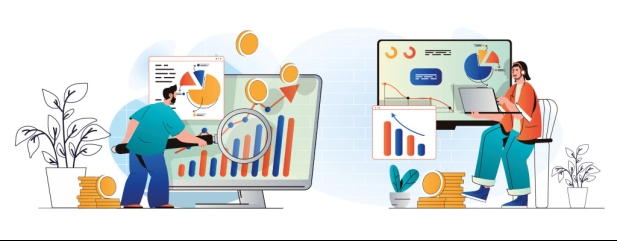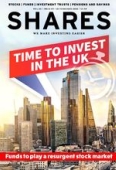Archived article
Please note that tax, investment, pension and ISA rules can change and the information and any views contained in this article may now be inaccurate.
How to buy and sell shares, investment trusts, ETFs and funds

You’ve started thinking about your investment goals and what you want to invest in. Now it’s time to convert thoughts into action and start putting your money to work in the markets. This article
will explain, step by step, how to invest in shares and funds.
First you need to find an investment platform and open an account. It is far less expensive and for most people more straightforward to invest online than over the phone.
HOW DO YOU CHOOSE A PLATFORM AND THE RIGHT ACCOUNT?
When it comes to choosing your platform provider cost is one of the key considerations. Healthy competition in this market means charges for dealing individual shares as well as other vehicles listed on the stock market like ETFs (exchange-traded funds) and investment trusts are typically £10 or less.
Dealing charges on funds are even lower. AJ Bell charges £9.95 for an individual trade in a share, trust or ETF and has a dealing charge of £1.50 for funds, for example.
A quick scan of the provider’s website should give you a good idea of the different charges you will face when investing in funds and shares. Remember, as well as dealing costs you will also pay the platform provider a fee (known as a custody charge) for holding your investments. This can be levied on annual or quarterly basis depending on who you use. You will also pay stamp duty when trading shares and investment trusts (but not ETFs and funds) regardless of the platform.
For most people the most obvious choice of account is a Stocks & Shares ISA as any returns and income are protected from the taxman. Exceptions might be if you have already exceeded your £20,000 ISA allowance this tax year or if you are investing for your retirement, then you might opt for simple dealing account or SIPP (self-invested personal pension) instead.
Now it’s time to fund your account. You have two main options: transfer a lump sum from your bank account using your debit card or set up a direct debit to fund your account on a regular basis.
As soon as the money is in your account, you are good to go.
Opening a Stocks& Shares ISA
The process is straightforward and can take
as little as 10 minutes. Typically, you will be asked to provide:
- Your address details for the past three years
- Your debit card details
- Your telephone number
- A valid email address
- Your National Insurance number
Once you have completed the online form you need to have a spin through some documentation. Assuming your application is successful you will receive your account number at the end of the process.
WHY YOU MIGHT OPT TO INVEST THROUGH FUNDS
Many inexperienced investors start off with funds and this can be a sensible option for two key reasons.
First, you benefit from diversification as you gain exposure to lots of different holdings rather than having your returns dependent on one or two individual shares. If something goes wrong with one or two investments in a fund the rest of its holdings should help cushion the blow and hopefully limit any losses.
Second, a fund manager is a professional who typically has lots of knowledge and experience and whose full-time job is making investments.
If you know the fund you want to invest in then you can input the name into your platform and bring up the relevant page which will include information about its performance, fees and portfolio. If you can’t find the right fund straight away it’s worth trying some key words as abbreviated fund names can sometimes catch out search engines. Sometimes platforms will have lists of their ‘favourite’ funds, which can be a useful starting point.
It is also worth checking which version of the fund you are buying – specifically whether it is the ‘inc’ (income) or ‘acc’ (accumulation) version. If you invest in the accumulation version of the fund then any income generated from the underlying investments will be automatically reinvested back into the fund, while the income version will see dividends paid out to you as cash.
You can buy and sell when you want or use a regular investment service where you pay a reduced transaction fee to invest on a specific day each month. The investment platform will group your order with ones placed by other investors and do everything in one go, thereby reducing its own trading costs.
HOW TO MAKE THE TRADE
For a one-off investment you will start by clicking on the deal or trade button. This places an order which is an instruction to buy or sell your chosen investment.
You need to have enough cash in your account to fund any charges. If you don’t then small bits of existing investments could be sold to pay these fees when they’re due to be paid.
Before you trade a fund, you will need to confirm you have read the necessary information about a fund including the Key Information Document or KID. This is a short document that provides important background about a fund which can help you decide if it is a suitable investment for you.
It often takes at a day for the order to buy a fund to be processed and completed. This means if you select to buy a certain number of units in a fund you will not know the total cost straight away, but you can also opt to buy units in a fund up to a certain monetary value.
For a transaction in shares, investment trusts and ETFs you will be provided with a time-limited quote to buy (or sell) at a certain price, reflecting the fact that their prices move around all the time. In a similar way to funds you can either select how much money or how many shares you want to trade. You will then be shown the total cost of the transaction.
DISCLAIMER: AJ Bell owns Shares magazine. The author (Tom Sieber) and editor (Daniel Coatsworth) of this article own shares in AJ Bell.
Important information:
These articles are provided by Shares magazine which is published by AJ Bell Media, a part of AJ Bell. Shares is not written by AJ Bell.
Shares is provided for your general information and use and is not a personal recommendation to invest. It is not intended to be relied upon by you in making or not making any investment decisions. The investments referred to in these articles will not be suitable for all investors. If in doubt please seek appropriate independent financial advice.
Investors acting on the information in these articles do so at their own risk and AJ Bell Media and its staff do not accept liability for losses suffered by investors as a result of their investment decisions.
Issue contents
Editor's View
Feature
- Revealing the bargain stocks which may have been left behind
- Time to invest in the UK: funds to play a resurgent stock market
- Discover the funds and stocks which pay monthly and quarterly incomes
- The £5 investment challenge. Get on board and invest a little bit more each month
- Emerging markets: a cold winter for China and growth back in favour
- Discover the emerging markets stocks picked out as growth champions
Great Ideas
News
- Big banks fail to live up to the market’s high expectations
- How US retail titans Walmart and Home Depot disappointed investors
- Darktrace calls in EY as it mounts fight against big fraud claims
- Why billionaire Ken Griffin is backing the Boohoo recovery plan
- LADbible owner LBG Media more than doubles after strong trading and broker optimism
- Trainline shares down 30% in six months with recovery derailed by strikes

 magazine
magazine








